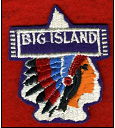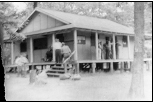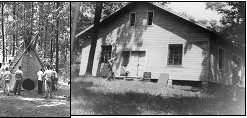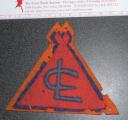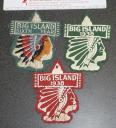There’s an e-mail making the rounds that I thought was worth saving here for posterity. It gives a chuckle more so that some of these statements go back hundreds of years. We are in some messed up times. Government ‘coming to the rescue’ is really us – we are the government. The mint might print the money but we are the ones who pay for it. That being said, there are such things as public goods – items that individuals can’t afford but want and thus only happen if we all pitch in (e.g., the Interstate system comes to mind).
We, the country, will be paying for mis-deeds of a few and the complicity of many. “Bankers” on Wall Street were alchemists turning lead into gold but like all such alchemy it truly was just lead and its weighing us down. These bankers thought it normal to make $10million, $20million, or more per year for shuffling paper around. The original purpose of their endeavors, securitization of financial obligations, was a productive use but it got too carried away to the point they were paying folks to sign their name on increasingly bad loans.
This is a blog about patches so how does this relate? Well, there are corrollaries. Why are the values of our items holding up? Because they weren’t made to necessarily be collectibles. Because the program creates strong emotional attachments that last a life time. Its supply and demand. As those remain solid then the hobby will remain solid.
So if without further ado:
Profound Statements
1. In my many years I have come to a conclusion that one useless man is a shame, two is a law firm and three or more is a congress.
— John Adams
2. If you don’t read the newspaper you are uninformed, if you do read the newspaper you are misinformed.
— Mark Twain
3. Suppose you were an idiot. And suppose you were a member of Congress. But then I repeat myself.
— Mark Twain
4. I contend that for a nation to try to tax itself into prosperity is like a man standing in a bucket and trying to lift himself up by the handle …
— Winston Churchill
5. A government which robs Peter to pay Paul can always depend on the support of Paul.
— George Bernard Shaw
6. A liberal is someone who feels a great debt to his fellow man, which debt he proposes to pay off with your money.
— G. Gordon Liddy
7. Democracy must be something more than two wolves and a sheep voting on what to have for dinner.
— James Bovard, Civil Libertarian (1994)
8. Foreign aid might be defined as a transfer of money frompoor people in rich countries to rich people in poor countries.
— Douglas Casey, Classmate of Bill Clinton at Georgetown University
9. Giving money and power to government is like giving whiskey and car keys to teenage boys.
— P.J. O’Rourke, Civil Libertarian
10. Government is the great fiction, through which everybody endeavors to live at the expense of everybody else.
— Frederic Bastiat, French Economist (1801-1850)
11. Government’s view of the economy could be summed up in a few short phrases: If it moves, tax it. If it keeps moving, regulate it. And if it stops moving, subsidize it.
— Ronald Reagan (1986)
12. I don’t make jokes. I just watch the government and report the facts.
— Will Rogers
13. If you think health care is expensive now, wait until you see what it costs when it’s free!
— P.J. O’Rourke
14. In general, the art of government consists of taking as much money as possible from one party of the citizens to give to the other.
— Voltaire (1764)
15. Just because you do not take an interest in politics doesn’t mean politics won’t take an interest in you!
— Pericles (430 B.C.)
16. No man’s life, liberty, or property is safe while the legislature is in session.
— Mark Twain (1866)
17. Talk is cheap…except when Congress does it.
— Anonymous
18. The government is like a baby’s alimentary canal, with a happy appetite at one end and no responsibility at the other.
— Ronald Reagan
19. The inherent vice of capitalism is the unequal sharing of the blessings. The inherent blessing of socialism is the equal sharing of misery.
— Winston Churchill
20. The only difference between a tax man and a taxidermist is that the taxidermist leaves the skin.
— Mark Twain
21. The ultimate result of shielding men from the effects of folly is to fill the world with fools.
— Herbert Spencer, English Philosopher (1820-1903)
22. There is no distinctly native American criminal class…save Congress.
— Mark Twain
23. What this country needs are more unemployed politicians.
— Edward Langley, Artist (1928-1995)
24. A government big enough to give you everything you want, is strong enough to take everything you have.
— Thomas Jefferson


